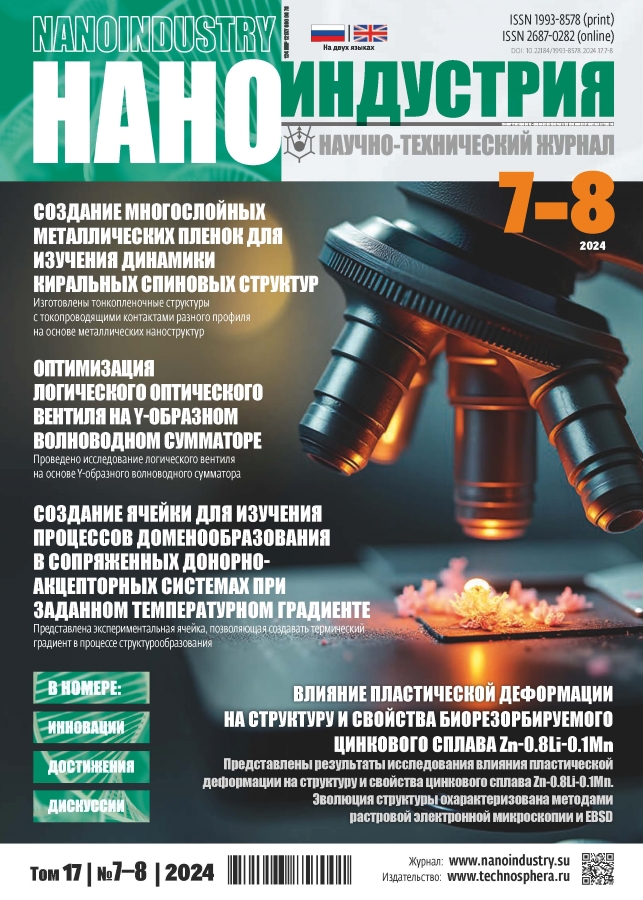Fluorescence optical nanotomography: combining the techniques of total internal reflection fluorescence microscopy and ultramicrotomy
- Authors: Mochalov K.E.1, Agapova O.I.2, Agapov I.I.2, Korzhov D.S.1,3, Solovyeva D.O.1, Sizova S.V.1, Shestopalova M.S.1,3, Oleinikov V.A.1,3, Efimov A.E.2
-
Affiliations:
- Shemyakin and Ovchinnikov Institute of Bioorganic Chemistry RAS
- Shumakov National Medical Research Center of Transplantology and Artificial Organs of Ministry of Health of the Russian Federation
- National Research Nuclear University MEPhI
- Issue: Vol 17, No 7-8 (2024)
- Pages: 428-433
- Section: Nanotechnologies
- URL: https://journals.eco-vector.com/1993-8578/article/view/642501
- DOI: https://doi.org/10.22184/1993-8578.2024.17.7-8.428.433
- ID: 642501
Cite item
Abstract
A method of 3D-TIRF microscopy is proposed, based on combination of ultramicrotomy and total internal reflection fluorescence microscopy techniques of the sample surface after cutting, which allows reconstructing the three-dimensional ultrastructure of objects.
Full Text
About the authors
K. E. Mochalov
Shemyakin and Ovchinnikov Institute of Bioorganic Chemistry RAS
Email: antefimov@gmail.com
ORCID iD: 0000-0001-8157-9613
Doct. of Sci. (Physics and Mathematics), Senior Researcher
Russian Federation, MoscowO. I. Agapova
Shumakov National Medical Research Center of Transplantology and Artificial Organs of Ministry of Health of the Russian Federation
Email: antefimov@gmail.com
ORCID iD: 0000-0002-4507-1852
Cand. of Sci. (Biology), Senior Researcher
Russian Federation, MoscowI. I. Agapov
Shumakov National Medical Research Center of Transplantology and Artificial Organs of Ministry of Health of the Russian Federation
Email: antefimov@gmail.com
ORCID iD: 0000-0002-0273-4601
Doct. of Sci. (Biology), Prof., Head of Laboratory
Russian Federation, MoscowD. S. Korzhov
Shemyakin and Ovchinnikov Institute of Bioorganic Chemistry RAS; National Research Nuclear University MEPhI
Email: antefimov@gmail.com
ORCID iD: 0009-0006-2626-1278
Technician
Russian Federation, Moscow; MoscowD. O. Solovyeva
Shemyakin and Ovchinnikov Institute of Bioorganic Chemistry RAS
Email: antefimov@gmail.com
ORCID iD: 0000-0002-2590-4204
Cand. of Sci. (Biology), Researcher
Russian Federation, MoscowS. V. Sizova
Shemyakin and Ovchinnikov Institute of Bioorganic Chemistry RAS
Email: antefimov@gmail.com
ORCID iD: 0000-0003-0846-4670
Cand. of Sci. (Chemistry), Researcher
Russian Federation, MoscowM. S. Shestopalova
Shemyakin and Ovchinnikov Institute of Bioorganic Chemistry RAS; National Research Nuclear University MEPhI
Email: antefimov@gmail.com
ORCID iD: 0000-0001-6543-4289
Engineer Researcher
Russian Federation, Moscow; MoscowV. A. Oleinikov
Shemyakin and Ovchinnikov Institute of Bioorganic Chemistry RAS; National Research Nuclear University MEPhI
Email: antefimov@gmail.com
ORCID iD: 0000-0003-4623-4913
Doct. of Sci. (Physics and Mathematics), Prof., Head of Department
Russian Federation, Moscow; MoscowA. E. Efimov
Shumakov National Medical Research Center of Transplantology and Artificial Organs of Ministry of Health of the Russian Federation
Author for correspondence.
Email: antefimov@gmail.com
ORCID iD: 0000-0002-0769-301X
Doct. of Sci. (Biology), Chief Researcher
Russian Federation, MoscowReferences
- Dongre A., Weinberg R.A. New insights into the mechanisms of epithelial–mesenchymal transition and implications for cancer, Nat. Rev. Mol. Cell Biol. 2019. Vol. 20. PP. 69–84. https://doi.org/10.1038/s41580-018-0080-4
- Finkenstaedt-Quinn S.A., Qiu T.A., Shin K., Haynes C.L. Super-resolution imaging for monitoring cytoskeleton dynamics, Analyst. 2016. Vol. 141. PP. 5674–5688. https://doi.org/10.1039/C6AN 00731G
- Axelrod D. Total Internal Reflection Fluorescence Microscopy in Cell Biology, Traffic. 2001. Vol. 2. PP. 764–774. https://doi.org/10.1034/j.1600-0854.2001.21104.x
- Poulter N.S., Pitkeathly W.T.E., Smith P.J., Rappoport J.Z. The physical basis of total internal reflection fluorescence (TIRF) microscopy and its cellular applications, in: P. Verveer (Eds.), Advanced Fluorescence Microscopy. Methods in Molecular Biology, Humana Press, New York. 2014. PP. 1–23. https://doi.org/10.1007/978-1-4939-2080-8_1
- Martin-Fernandez M.L., Tynan C.J., Webb S.E.D. A ‘pocket guide’ to total internal reflection fluorescence, J. Microsc. 2013. Vol. 252. PP. 16–22. https://doi.org/10.1111/jmi.12070
- Mattheyses A.L., Simon S.M., Rappoport J.Z. Imaging with total internal reflection fluorescence microscopy for the cell biologist, J. Cell. Sci. 2010. Vol. 123. PP. 3621–3628. https://doi.org/10.1242/jcs.056218
- Stabley D.R., Oh T., Simon S.M., Mattheyses A.L., Salaita K. 2015. Real-time fluorescence imaging with 20 nm axial resolution. Nat. Commun. Vol. 6. P. 8307. https://doi.org/10.1038/ncomms9307
- Trexler A.J., Sochacki K.A., Taraska J.W. Imaging the recruitment and loss of proteins and lipids at single sites of calcium-triggered exocytosis, Mol. iol. Cell. 2016. Vol. 27. PP. 2423–2434. https://doi.org/10.1091/mbc.E16-01-0057
- Allikalt A., Purkayastha N., Flad K., Schmidt M.F., Tabor A., Gmeiner P., Hübner P., Weikert D. Fluorescent ligands for dopamine D2/D3 receptors. Sci. Rep. 2020. Vol. 10. P. 21842. https://doi.org/10.1038/s41598-020-78827-9
- Tabor A., Möller D., Hübner Y., Kornhuber J., Gmeiner P. Visualization of ligand-induced dopamine D2S and D2L receptor internalization by TIRF microscopy. Sci. Rep. 2017. Vol. 7. P. 10894. https://doi.org/10.1038/s41598-017-11436-1
- Sankaran J., Wohland T. Fluorescence strategies for mapping cell membrane dynamics and structures. APL Bioeng. 2020. Vol. 4. P. 020901. https://doi.org/10.1063/1.5143945
- Lukeš T., Glatzová D., Kvíčalová Z., Levet F., Benda A., Letschert S., Sauer M., Brdička T. Lasser T., Cebecauer M. Quantifying protein densities on cell membranes using super-resolution optical fluctuation imaging. Nat. Commun. 2017. Vol. 8. P. 1731. https://doi.org/10.1038/s41467-017-01857-x
- Efimov A.E., Agapov I.I., Agapova O.I., Oleinikov V.A., Mezin A.V., Molinari M., Nabiev I., Mochalov K.E. A novel design of a scanning probe microscope integrated with an ultramicrotome for serial block-face nanotomography. Rev. Sci. Instrum. 2017. Vol. 88. P. 023701. https://doi.org/10.1063/1.4975202
- Mochalov K.E., Chistyakov A.A., Solovyeva D.O., Mezin A.V., Oleinikov V.A., Vaskan I.S., Molinari M., Agapov I.I., Nabiev I., Efimov A.E. An instrumental approach to combining confocal microspectroscopy and 3D scanning probe nanotomography, Ultramicroscopy. 2017. Vol. 182. PP. 118–123. https://doi.org/10.1016/j.ultramic. 2017.06.022
- Мочалов К., Чистяков А., Соловьева Д. и др. / Инструментальное объединение конфокальной микроспектроскопии и 3D-сканирующей зондовой нанотомографии // НАНОИНДУСТРИЯ. 2016. Т. 7. № 69. С. 60–71.
Supplementary files









